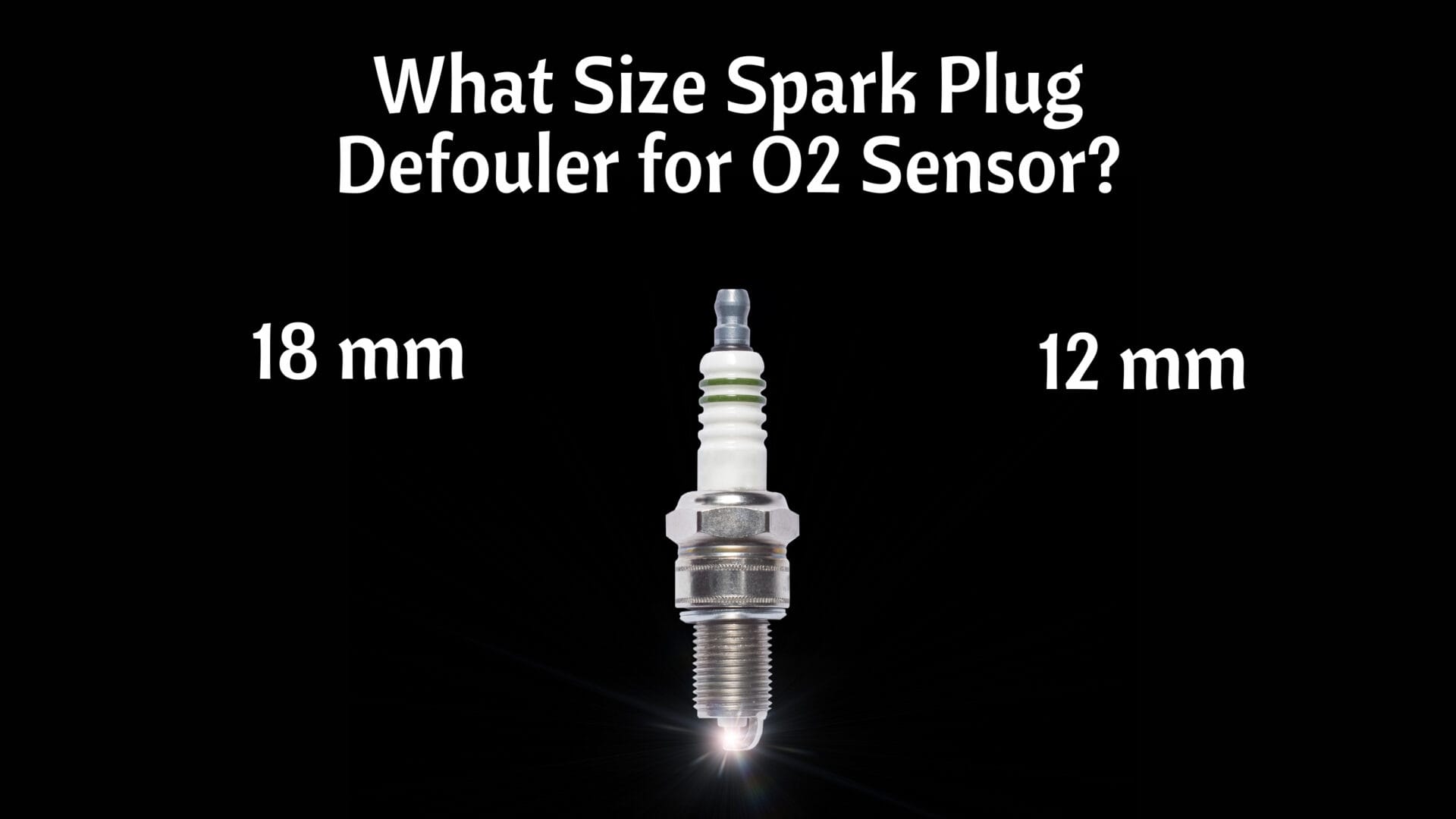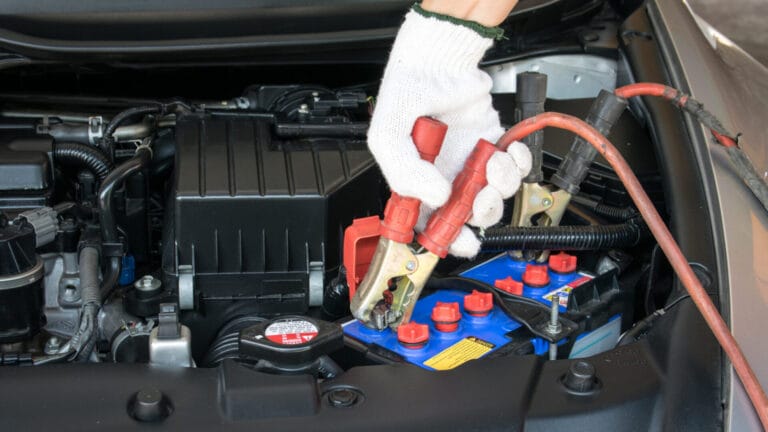What Size Spark Plug De fouler for O2 Sensor? 18 mm or 12 mm!
Spark plug de-foulers/non-foulers for O2 sensors trick the ECU by making more room for the exhaust gas to flow. It also reduces the amount of the carbon deposit. But the size of the spark plug defouler thread should be the same as the O2 sensor.
So, what size spark plug defouler for the O2 sensor?
The standard size of the spark plug defouler for the O2 sensor is 18 mm. This size will fit most car models. Some cars may need a 12 mm thread for the spark plug defouler. You should check the vehicle’s manual and consult a mechanic to find out the right thread size.
Let’s learn more about the required size, impact, and benefits of a spark plug de fouler for an O2 sensor.
What Is a Spark Plug Defouler for O2 Sensor?
O2 sensors or oxygen sensors are located in your car’s exhaust system. There are usually two oxygen sensors. One is the primary sensor, and the other is the backup sensor. When the combustion is done in the engine, the exhaust gas goes through the oxygen sensors.
Through chemical reactions, the oxygen sensors figure out the amount of oxygen in the exhaust gas. The sensors then send this data to the ECU, which calculates if the air-fuel mixture has the right ratio.
If the air-fuel mixture is too lean or rich, the ECU can adjust the mixture to deliver the right ratio. Improper mixtures can cause more fouling on the spark plugs. It also impacts the performance of the oxygen sensors. Over time, the oxygen sensors may become inefficient or faulty.
To prevent this, you can use spark plug defoulers for the O2 sensor. The defoulers are installed between the spark plugs and the O2 sensors. They increase the room for the exhaust gas. Before reaching the oxygen sensors, the exhaust gas becomes a bit diluted. As a result, the carbon deposit is reduced, and the oxygen sensor can run for a long time.
What Size Spark Plug Defouler for O2 Sensor?
Spark plug defoulers for the oxygen sensors come in two different thread sizes.

- 18 mm
- 12 mm
Oxygen sensors also have these thread sizes. So, a spark plug de fouler with the same thread as the oxygen sensor is a must for a tight fit.
Your vehicle’s user manual should have the oxygen sensor specifications. Find the thread size from there and use a matching spark plug de fouler size.
If you don’t have the manual handy but want to know the spark plug defouler size, take the car to an auto shop. Mechanics can remove the oxygen sensor and measure the thread size. They will tell you what size spark plug de fouler you should use for the oxygen sensor.
How Do You Install Spark Plug Defouler to the O2 Sensor?
The installation process of the spark plug defouler to the oxygen sensor is a bit tricky. You have to gather the required tools first.
- O2 sensor ratchet
- Two de-foulers for each sensor
- Drill bits from 8 mm to 18 mm
- Clamp
Step 1: Disconnect the Battery
When working with spark plugs or oxygen sensors, it is better to disconnect the battery. Take the black or negative cable out first. Then, remove the red cable.
Step 2: Remove the Oxygen Sensor
The oxygen sensor housing may be a bit difficult to reach. So, you should use an oxygen sensor ratchet. Place the ratchet on top of the oxygen sensor. Then, use a wrench to remove the oxygen sensor from the housing.
Step 3: Measure the Spark Plug Defouler
Insert the oxygen sensor into the de-fouler spacer. The thread size should match accurately. If the length doesn’t match, you can drill holes into the defouler.
Step 4: Clamp the Defouler and Drill Holes
Attach the defouler spacer to a clamp so that it remains fixed. Start drilling the defouler with the smallest drill bit and work your way up. Remember to use lubricants to keep the defouler from being dull.
Use the 18 mm bit at the end so that the length is perfect for the oxygen sensor. If you are using two spacers, do the same thing for both spacers.
Step 5: Install the First Spacer
Twist the first spare into the oxygen sensor housing. Some users tend to attach both spacers to the oxygen sensors first. As the space is tight near the sensor housing, installation can become difficult.
After installing the first spacer, put the second spacer onto the oxygen sensor and twist it tightly. Then, place the whole thing onto the first spacer. Tighten the sensor using the ratchet.
Step 6: Connect the Battery
While connecting the battery, attach the red cable first. Then, connect the black cable and turn the car on.
You can also check this video for better visualization:
Benefits of Spark Plug Defouler for O2 Sensor
Installing a spark plug de-fouler to O2 sensors will provide the following benefits.
It Reduces Emissions
As long as the oxygen sensors work correctly, the engine gets an air-fuel mixture in the right ratio. So, the combustion of the air-fuel mixture is the most efficient in this condition. The amount of harmful gasses in the exhaust is reduced if the combustion is efficient.
It Prevents Misfires
When the spark plug or the oxygen sensors have carbon deposits, the engine can misfire. A de-fouler keeps the spark plugs and oxygen sensors from fouling. So the engine runs more smoothly.
The Engine Performance Gets Better
With accurately working oxygen sensors, engines get an optimized air-fuel mixture. This results in better power delivery. So, the engine becomes more efficient if you use a spark plug de-fouler for the O2 sensor.
The Fuel Economy Is Improved
Fouled oxygen sensors may cause the ECU to deliver a rich air-fuel mixture. In this case, the fuel consumption will be much higher. With de-foulers, the oxygen sensor will send accurate data to the ECU to deliver the perfect mixture. So, it will improve the fuel economy.
It Ensures More Consistent Sparks
Defoulers work as barriers between the spark plugs and the oxygen sensors. As the exhaust gas is diluted within the spacers, the spark plugs and oxygen sensors receive fewer deposits. So, the sparks from the spark plugs are more consistent.
What Happens If I Use the Wrong Size Spark Plug Defouler for O2 Sensor?
If you take just any de-fouler without knowing the oxygen sensor thread size, the following problems can happen.
- The de-fouler will not fit the oxygen sensor housing at all if it is larger than the oxygen sensor thread.
- If the de-fouler thread is smaller than the oxygen sensor thread, there will be gaps around the thread. And the oxygen sensor will not fit into the de-fouler.
- Careless drilling of the de-fouler can cause cracks or leaks. As a result, the exhaust gas will escape the system before reaching the oxygen sensors. This can impact the emission norms.
FAQs
Find answers to some commonly asked questions about the size of the spark plug defouler for the O2 sensor.
Is there any universal size spark plug defouler for the O2 sensor?
No. Different vehicles will need differently sized spark plug de-foulers for O2 sensors. So, you must check the sensor thread before getting a defouler.
Can I only use the spark plug de-fouler on the O2 sensor before the catalytic converter?
Yes, you can. The sensor before the catalytic converter faces harmful exhaust gasses the most. The sensor after the converter is a bit safer, so you can leave that as is.
Should I use a spark plug defouler for O2 sensors to prevent checking engine light?
I don’t recommend it. It is just a temporary solution. You should check the underlying problem and solve it instead.
Is installing de-fouler to the O2 sensor legal?
Yes. The defouler can manipulate the emission rating of the vehicle. So, it is illegal for on-road use.
Conclusion
Spark plug defoulers for O2 sensors create a safer working environment. As a result, the oxygen sensors can provide an accurate reading to the ECU. It improves the engine’s performance, fuel economy, etc. Besides, it elongates the service life of the spark plugs and oxygen sensors. But using the right size is crucial.
So, what size spark plug defouler for the O2 sensor? 18 mm is the standard size for spark plug defouler thread. You may find smaller or larger threads, depending on the car model and brand. Determine the thread size first to avoid hassle later.





